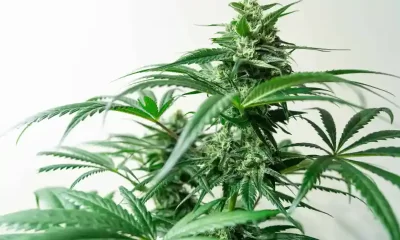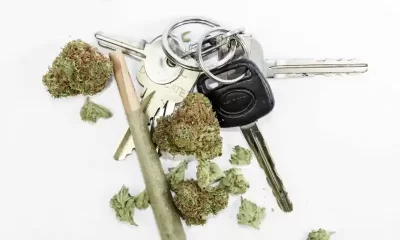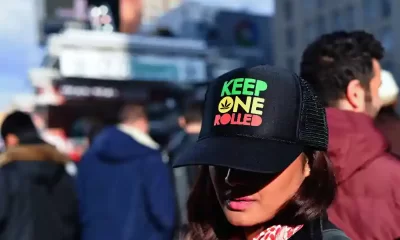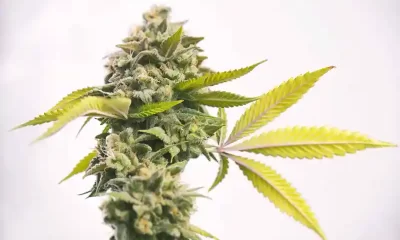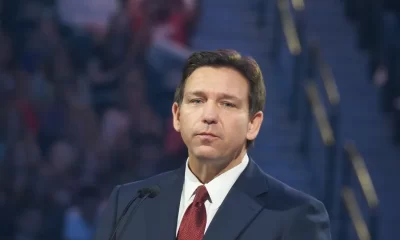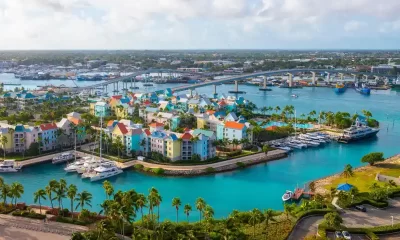Blogs
Kids and Psychedelic Medicine – Should 16 Be the Legal Age for Certain Treatments?
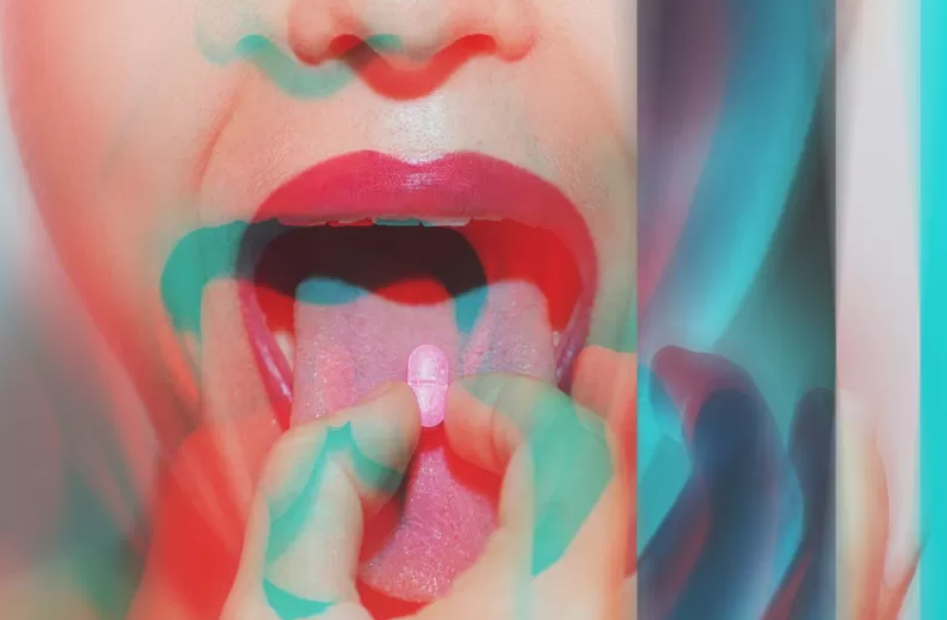
The Case for Making 16 the Legal Age to Consume Certain Psychedelics
I consumed my first psychedelic at the ripe young age of 15-years. I smoked weed at age 14. For the next few years, I would experiment with a whole assortment of drugs, from pharmaceuticals to other psychedelics.
Fortunately, for me, I made it out with no real damage to my body or mind as a result from years of drug use. To be fair, the drugs that nearly killed me were alcohol and pharmaceuticals.
Which is why by the age of 18, I realized that I don’t like the effects of pharmaceuticals. The “high” simply wasn’t worth it.
Psychedelics on the other hand – that caught my awareness like the moth to the flame. The first psychedelic I tried was MDMA or “Molly” as the kids call it these days. Back then we called it “X”.
I remember that experience only in flashes now, but I will never forget the feeling when the MDMA first kicked in. I was…well, “ecstatic”. I also went to my first Rave that night and came back feeling like a whole new world has opened up for me.
After that initial experience I was convinced that there must be “other drugs” that are;
- Not as Dangerous as the Government Claimed (Weed broke this truth to me)
- Portals to seeing the world in a whole new light
I intuitively understood that these substances were for consciousness exploration and it didn’t take long for me to shift from “using drugs to get high” to a more resourceful, “using drugs to explore my conscious landscape and understanding of life”.
However, there was a period of 6-8 years of reckless drug consumption, which all happened from the age of 15-23 more or less.
This is precisely why I believe we need to decriminalize and perhaps even make it legal to consume certain psychedelics at age 16. However, there’s a caveat.
16? Are You Nuts!!!
Before you fall back into the “What about the children” type of thinking, let me first explain to you why I think that certain psychedelics should be made available to teenagers who are most likely going to do them without your knowledge anyhow.
The first argument relates back to my teenage journey into psychedelia. Where I lived during that time, drugs were seen as the ultimate evil. Within the hierarchy of drugs, psychedelics were way at the bottom.
My peers – who were getting drunk every weekend – would often tell me, “Don’t do psychedelics, it will melt your brain! Do coke instead!”
I would tell them, “I have done coke, it really isn’t for me…”
You have to understand, these are all 16-17 year olds talking about drug consumption. All the while it was 100% illegal.
Therefore, the notion that something is “illegal” doesn’t deter teens from consuming drugs.
I can already hear the machinery move inside that brain of yours saying, “Well, if you normalize drugs then more kids will do it!”
Of which, I look at all the legal states where cannabis is available to adults for recreational purposes. In these states, we don’t see a significant uptick in cannabis use despite legalization. The kids that were going to smoke irrespective of the laws, will find a way to consume cannabis. Those who weren’t going to, will most likely not do it.
This is what more than 10-years of legalization data tells us.
Therefore, if we were to legalize psychedelics use at age 16, I don’t think that “many kids” will run to get high on psychedelia. However, I do think that those who would do it anyway would have a greater chance of not fucking up if it were legal.
I’ll explain my framework for 16-year olds later below.
The fact of the matter is that “some kids” will consume drugs whether you like it or not. The only difference is that when you keep it “illegal” you pretty much outsource the responsibility to the 16-year old on figuring it all out. No guidance, no voice of reason…just 16-year-old hormones raging along seeking the next big thrill!
Does this seem like a responsible model?
Now I know that some of you cling to your idealism and believe that we can “rid the world” of drug abuse…but that is a fantasy. If that was true, we can also “rid the world of obesity” but we all know that it will never happen.
Okay – what’s your framework?
You see, I’m not an unreasonable person. I understand that we should attempt to keep drugs out of the hands of teens mainly due to their development of brain, body, and identity. While I was unscathed by the excessive amount of drugs I did as a teen, I can’t say the same for everyone.
There were people who couldn’t “keep their shit together”. People who I had to guide through the experience because they were experiencing Ego-Death or fell into a psychedelic portal of some kind. Was I any more experienced as a drug user?
Not really. It was almost a case of the “blind leading the blind”, but I was always someone very aware of their internal processes.
It’s partly the reason why I never “flipped out”, except for those times on alcohol and pharmaceuticals.
When it came to psychedelics, I quickly understood a few things;
- What’s happening isn’t necessarily “real” but rather a projection from what’s inside me?
- Set and Setting is IMPORTANT AF!
- What comes up must come down
- Instead of freaking, sit back and observe
Perhaps it’s because I have always been inclined to practice mindfulness, meditation, etc that I could handle these stages…but maybe not.
The fact of the matter was that I intuitively learned how to ride the psychedelic dragon – yet I had to experience some “harsh trips” for me to be educated.
It’s during these “harsh trips” that people freak out and do stupid stuff. You know the story, “the kid got high and thought he could fly” or “the kid got high and had a bad trip and as a result did some stupid shit!”
There’s many sob stories of teens who took too much and couldn’t handle their shit. This is in essence, the root of the problem.
When you take an inexperienced mind, throw into the belly of psychedelia without guidance, you might get people reacting to the intensity of the experience. This is because a psychedelic experience is unique.
Every time I take a psychedelic – there’s a sense of excitement and nervousness. This is because I understand that, “after taking this, there’s no going back until it’s over…”
I need to prepare myself for the infinite possibilities on how the substance will react with my current state of mind, traumas lurking within my awareness, the people I’m with, etc. My Mindset needs to be in the right place.
Conversely, a teen simply pops that shit like it’s a mint and expects everything to be dandy. Only to find themselves knee deep in anxiety when the walls start breathing.
So here’s what I propose;
- Make Certain Classic Psychedelics (legal) for consumption at age 16.
- You can only take these psychedelics (For free) at certain spaces when you’re underage. This is a specialized place where you can consume the substance with adult supervision.
- You have to go through drug training prior to being eligible for a free trip.
- You are limited to four Trips per year.
- You opt in to fill out surveys about your experience, brain scans, etc for the sake of research.
- Need Parental Approval
Why wouldn’t we want to charge kids for a psychedelic experience? Because then we remove the “capitalism” from the equation and create a more holistic experience. Additionally, you don’t want to have teens associate “commerce” with drugs, but rather satisfy an innate desire they have to “get lit”.
The Psychedelics I think would be “okay” for teens to use include;
- Magick Mushrooms
- Mescaline
- LSA/LSD
- DMT/Ayahuasca
- Etc
For the most part, these drugs don’t have a significant negative impact on the developmental brain. At least, we don’t have enough studies to suggest that it does. However, it is definitely far less destructive than binge drinking which “damages the dendrites in the cerebellum and impai the communication between neurons. Researchers discovered that alcohol use not only disrupts communication between neurons; it can also alter their structure.” – Source
The same cannot be said of these classic psychedelics. The brain “damage” is minimal and since we can limit the legal use to 4-times per year, there would not be any significant impact on the developing mind.
However, what we may achieve though is;
- Satisfy the Need for Exploration in the Youth
- Focus in on Quality (many bad trips come from bad drugs with poor quality)
- Create a safe environment
- Learn from the experience, the impact on the brain, etc.
We can continue to theoretically study drugs, or come to the realization that “some people” will consume it irrespectively. If we accept this truth, then we can remove any ethical constraints from giving people who “consent” to taking a psychedelic substance.
If we were to embrace this model, we would learn more about psychedelics in 10 years than we would uncover in 100-years with these small clinical trials. The Net benefit for society outweighs any potential risks.
Final Thoughts
Nobody is advocating that teens “should” take psychedelics. It should not be considered as something “easy”, but it certainly should be an option.
There are many cultures around he world where psychedelics is part of their “rites of passage” and frequently it’s young teenagers that consume these psychedelics. In the mountains of Oaxaca, many of the older people you talk to will tell you that they have been taking mushrooms since they were teenagers.
Most people would not opt in to take psychedelics, even if it’s legal. This is because their “house culture” will have a lot to say about their use. However, for some people, who will find a way to get high with or without our permission, these people could benefit from this proposed idea.
If I was sixteen and someone said, “You can become part of this psychedelic trial, we’re going to teach and test you, you’ll get free access in a safe space where medical professionals will be with you throughout the experience…” I would have said, “where do I sign up!”
I think most kids are just curious and since we are keeping drugs as a taboo subject, all the while drinking caffeine and ethanol like there’s no tomorrow – we create an environment where the risks of taking drugs increases significantly.
If we’re truly honest and want to focus on the “safety” of children, we can’t ignore those that will break the law to get high. We must accommodate for everyone.
Now I may be wrong about this assessment, however, I think we should at the very least explore this as an option because what we’ve been doing for the past 50+ years has not been working and provided very little benefit to the rest of society.
Blogs
Border sales a boost for most marijuana retailers across US

Marijuana sales along state lines are key revenue generators for retail operators in the United States, and new insights suggest a similar business bump along international borders, particularly Mexico.
Data compiled by New York-based wholesale technology platform LeafLink – as well as information gathered from state agencies, quarterly reports and interviews with several cannabis companies – bear that out.
LeafLink analyzed hundreds of ZIP codes at the request of MJBizDaily and found strong links that when new recreational markets open, retailers near borders stock up on inventory significantly more than operators located elsewhere in a state.
Data from the past three years revealed wholesale marijuana products purchased by border stores jumped 140% after the launch of adult-use sales, while retailers located in more interior areas increased purchases by about 80%.
“The growth when a state launches adult-use sales at a border store in terms of purchasing activity is around double the growth of the remainder of the state,” LeafLink Strategy Analyst Ben Burstein told MJBizDaily.
Of course, numerous factors are at play – perhaps none more impactful than the marijuana policies of neighboring states.
That’s why Illinois retailers near Wisconsin, where marijuana possession is illegal, are still attracting Wisconsinites nearly four years after the launch of recreational sales.
There also are retail sales-tax implications, a big reason why St. Louis-areas operators are seeing an influx of shoppers from southern Illinois, where cannabis taxes are at least three times higher than in Missouri.
Meanwhile, border retail in New Mexico is boosting depressed economies along hundreds of miles of its shared borders, drawing stampedes of consumers from neighboring Texas and, more recently, cross-border buyers from Mexico.
Retail shakeup in the heartland
The February launch of adult-use sales in Missouri has caused ripple effects throughout the Midwest.
Missouri holds the rare distinction of bordering eight states, with only Illinois offering recreational marijuana sales.
Missouri’s 6% retail tax on recreational marijuana purchases is also among the lowest in the nation, drawing Illinois consumers across the Mississippi River in droves to buy much cheaper weed.
All in, cannabis sales taxes in neighboring Illinois eclipse 30%, second only to Washington state. And in Chicago, sales taxes can easily top 40%.
Demand is booming in western Missouri, too.
In April, Missouri retailers near the border of Kansas, where marijuana possession is also illegal, told MJBizDaily they were seeing foot traffic increase ninefold after expanding into recreational sales.
The rush of new customers, coupled with cultivation-capacity lags, has led to big spikes in wholesale flower prices and inventory shortages throughout the supply chain.
Retailers, for their part, are trying to keep pace.
To meet consumer demand, wholesale purchases per store in the Kansas City, Missouri, market increased from $97,000 in the quarter before the launch of recreational sales to $491,000 in the quarter after, a whopping 406% jump, according to LeafLink data.
In the St. Louis market, which borders southwestern Illinois, wholesale purchases per store increased nearly 57%, to $610,000, after adult-use sales began.
“The demand’s been bigger than anyone expected,” Burstein said.
A zero-sum game
In marijuana retail, particularly near state borders, it’s a zero-sum game.
The sales boom in the St. Louis market, which has more than 70 stores, has deflated business on the Illinois side of the border, where retailers have lost millions of dollars in sales since Missouri’s adult-use launch, according to quarterly reports and earnings calls.
Top executives at New York-based multistate operator Ascend Wellness Holdings, which has two shops near the Missouri border, cited revenue declines at its southern Illinois stores in recent earnings, saying it has led to suppressed margins that are expected to linger for much of the year.
Florida-based MSO Jushi Holdings, which also operates two Illinois stores near the Missouri border, reported an 8.8% year-over-year revenue decline to $66.4 million in its second quarter, partially attributing the slide to adult-use sales in Missouri.
In an Aug. 11 second-quarter earnings call, Jushi CEO James Cacioppo said total Illinois sales declined 20% from the first quarter and 40% year-over-year.
“I think we under-anticipated the pricing power initially out of the gate that retailers were going to have in Missouri,” Jushi Chief Strategy Director Trent Woloveck told MJBizDaily in an interview.
“The impact was a little bit greater than then we had thought due to that pricing for flower, vapes and infused products.”
In response, Jushi has implemented several initiatives, including adding new promotions and diversifying product SKUs (stock-keeping units) to ease the impact of declines sales in Illinois.
Northern exposure
Market dynamics in northern Illinois, particularly along the Wisconsin border, are a different story.
Wisconsin is among 10 states without a medical or recreational marijuana program.
Illinois counties bordering Wisconsin – including Lake, McHenry, Jo Daviess and Winnebago – accounted for 15.4%, or $239.7 million, of the nearly $1.6 billion in cannabis sales last year in the state, according to a fiscal analysis requested by pro marijuana-legalization lawmakers in Wisconsin.
The Wisconsin Legislative Fiscal Bureau report, which was released in March, cited annual statistics from the Illinois Department of Financial and Professional Regulation.
Moreover, the report estimated about 7.8% of marijuana sales in Illinois in 2022, roughly $36.1 million, were generated by out-of-state residents traveling from Wisconsin.
Under Illinois law, out-of-state residents can only purchase recreational cannabis.
Two of Chicago-based multistate operator Cresco Labs’ 10 stores in Illinois are located near the Wisconsin border: a Sunnyside outlet in South Beloit at the border and one in Rockford, about a 30-minute drive away.
The South Beloit store often draws up to 1,000 daily visitors, according to Cresco’s national retail president, Cory Rothschild – traffic on par with the nation’s busiest marijuana retailers in highly populated areas.
It’s all the more impressive, considering that South Beloit has a population of roughly 8,000 and is more than 40 miles from Madison, the nearest city and Wisconsin’s state capital.
“It’s an extremely high-volume retail location,” Rothschild told MJBizDaily.
“South Beloit and Rockford as well are probably (among the) top dispensaries in the country.”
Maryland
Maryland is the newest recreational cannabis market, with nearly 100 medical marijuana dispensaries having converted to adult-use retail in late June.
While LeafLink wholesale data suggests about a 10% increase in wholesale product purchases statewide after the launch of adult-use sales, some retailers along Maryland’s south and eastern borders are doubling orders to meet demand.
In Elkton, near the Delaware border, stores are ordering about $41,000 in wholesale products per month, up 115% since the launch of recreational sales on July 1.
In the Rockville/Germantown area – outside of Washington DC and near the Virginia and West Virginia borders – monthly wholesale purchases have increased about 42%, to $54,000 per store, since recreational sales began.
Though MMJ dispensaries opened in West Virginia in 2021, the state still has some of the harshest marijuana laws in the country, according to the Marijuana Policy Project.
Meanwhile, Virginia’s adult-use rollout has been put on ice by Republican Gov. Glenn Youngkin.
MSO MariMed’s wholesale business serving retailers in Maryland has benefited from increased demand from neighboring states, according to Jeff Jones, director of operations.
“We have retail customers that are very close to Virginia, Pennsylvania and West Virginia, and I’m sure that’s driving a significant amount of their business,” he said.
The Massachusetts-based company supplies every retailer in the state with its product brands.
MariMed is planning to double its cultivation and canopy space in Maryland, with product from that expansion expected to hit the wholesale and retail markets in the first quarter of 2024, Jones said.
Its retail operation in Annapolis – the state capital is about a 45-minute drive from Pennsylvania or West Virginia – hasn’t experienced the same type of uptick from border business but is still performing well, according to Jones.
A tale of two borders
The small town of Sunland Park, New Mexico, has racked up outsized sales since the state launched recreational retail in April 2022.
The sparsely populated bedroom community is situated across the border from El Paso, Texas, and Jaurez, Mexico, which have a combined population of more than 2.2 million.
That purchasing power has helped Sunland Park’s 88063 ZIP code top the state for per-capita adult-use spending, a sales metric that divides dollars spent for cannabis by population.
Per-person recreational marijuana spending in Sunland Park was $1,044, according to an MJBizDaily analysis of data from the New Mexico Regulation and Licensing Department.
Its 88063 ZIP code also houses two of New Mexico’s leading cannabis stores.
Ultra Health and Everest Cannabis Co. generated nearly $6.1 million in combined sales from August 2022 to February 2023, according to MJBizDaily research.
Because business has been so strong at that Sunland Park store, Ultra Health last summer opened an adjacent location that handles only online orders for pickups.
The majority of its 42 stores were strategically aligned to capture business along New Mexico’s more than 600-mile border with Texas, the second-most-populated state.
“I would say half our business is Texas-related,” Ultra Health CEO Duke Rodriguez told MJBizDaily.
As part of that strategy, the company is planning to open an outlet in Lordsburg with hopes of drawing customers from Mexico, Texas and Arizona.
Mexico border towns share more than commerce, including family, culture and language.
Some residents own commercial properties and homes on either side of the border.
And residents tend to travel freely between Juarez, El Paso and Sunland Park to shop, dine and visit friends and family, according to Rodriguez.
Many also buy regulated marijuana, which might come as a surprise to some industry watchers, especially those unfamiliar with border business in the Southwest.
Though transporting licensed cannabis across the U.S.-Mexico border is barred under federal law, it’s fairly common, industry insiders tell MJBizDaily.
“The product is intended to be consumed within the state of New Mexico and should not cross state or international boundaries,” Ultra Health’s Rodriguez advised.
“The reality is some consumers cross these boundaries intentionally or by not being fully aware of the risk and prohibition.”
Sales in other border communities, such as Clovis and Hobbs – where Ultra Health also has stores – are also outpacing the field, another sign that Texans, and some Mexicans, are crossing the border to purchase marijuana from New Mexico marijuana retailers.
Source: https://mjbizdaily.com/border-sales-a-boost-for-most-cannabis-retailers-across-us/
Blogs
Cannabis Art Is Flourishing On Etsy

Although there is an available and thriving market for cannabis art, most e-commerce websites and platforms prohibit artists from selling art that depicts cannabis.
Is there any section or industry without cannabis influence? It’s starting to look like there isn’t any, as, throughout history, cannabis users have displayed their creative capabilities in various ways. And now cannabis art is flourishing on Etsy
Cannabis users and enthusiasts are some of the most innovative people you’ll ever meet, and their inspiring works of art have been admired for decades. Most of the works created by cannabis enthusiasts have also sparked debate for centuries, dating William Shakespeare’s times.
Cannabis and the creative arts
Research has shown a fantastic connection between cannabis and creativity, an intriguing relationship that is attributed to the plant’s remarkable properties. Cannabis interacts with the human brain through the endocannabinoid system and receptors in the brain.
Extensive works of research show that creative prowess and imagination heighten when users consume cannabis, thus enabling divergent and distinct thought patterns. Hence the reason great men and women like Maya Angelou and Louis Armstrong celebrated the impact of cannabis on their creative careers.A more significant percentage of the creative industry is also full of trailblazers who have affirmed that cannabis is a significant influence on their success. For such artists, marijuana inspires the way they hone their crafts and showcase their ideas.
Despite such a show of artistic brilliance, some artists struggle with finding a place to showcase their works. Why is this the case? Why can’t artist showcase their cannabis-inspired art?
The problem with finding a market showcase
Although there is an available and thriving market for cannabis art, most e-commerce websites and platforms prohibit artists from selling art that depicts cannabis. Some of these merchant shops also flag items such as CBD paraphernalia and insist that such things cannot be sold.
With such restrictions, creative artists fail to get an adequate space to share their creations with the world. Artists feel shut out of the market space, and then COVID-19 happened.
The Coronavirus Pandemic made everything worse for cannabis artists and businesses to maintain operations, which created a disturbing gap in the market.
The Solution: A cannabis-themed marketplace
As the challenge became increasingly worse, two outspoken cannabis advocates co-founded an online marketplace called The Artsy Leaf. Space was set-up as a multi-vendor marketplace to make it possible for artists to display their works.
The co-founders Abbey Weintraub Sklar and Rebecca Goldberg discovered that there were many international craftsmen, women, and artists with products that weren’t shared on any platform. The artists’ products are unique cannabis-friendly items that were mostly scattered on censored tech platforms that limited their exposure to the world.
Goldberg and Skylar understood the importance of an online vendor marketplace created for creators and buyers in the cannabis industry. COVID-19 and its resultant impact was also the inspiration behind an online space.
Initially, it was supposed to be an in-person CBD marketplace, but the pandemic made physical meetings impossible for buying and selling purposes. Hence the reason the co-founders made it an online space with a highly functional website.
The Artsy Leaf
The Artsy Leaf marketplace replaces other online platforms that were too restrictive for those in the cannabis industry. Some of those unfriendly sites didn’t provide room for tagging, describing, and listing CBD products, making it difficult for artists to advertise their products.
But with the Artsy Leaf marketplace, vendors and small business owners have maximum freedom to advertise their cannabis items. The platform also incorporates advertising with SEO consulting and doesn’t hide its processing fees.
The co-founders maintain that their desire to help all cannabis vendors succeed drives the marketplace. The website launched with an initial 14 vendors, and with its viable operational approach, more vendors are expected to join this revolutionary idea.
A virtual cannabis marketplace is what the world needs right now to bridge the gap between artists and buyers. Cannabis-inspired pieces will always remain relevant globally because of how unique and disruptive they can be. The Artsy Leaf is the right incubation place for ideas, purchases, and value exchange.
The future of the online marketplace
The future of the online cannabis marketplace for artists looks promising, and why is this so important? Well, cannabis is gaining a lot of momentum in America, with more states legalizing marijuana more people will gain access to weed, and when they do, they may be inspired to create unique art pieces or be looking to purchase unique cannabis inspired works.
Either way, the cannabis world needs an outlet for artists to share their works, and this is where platforms like the Artsy Leaf become crucial. Other online platforms may start to look into adjusting their policies regarding this issue because this sector is about to explode.
It is time to change the current status quo on the other E-commerce sites not allowing cannabis artists to showcase their genius.
Bottom line
The world is awakening to the ever-increasing potentials of cannabis. Through marketplaces like the Artsy Leaf, cannabis artists and art lovers can meet, interact and sustain the cannabis industry.
Without platforms like these, cannabis-inspired art will gradually decline, and that isn’t good for the cannabis industry at all. We must all continue to encourage the establishments of platforms (online and offline) where artists can thrive. Budding cannabis artists need more places to express themselves, and the Artsy Leaf is a suitable platform.
If you are a cannabis-themed artist, an aspiring one, or a small business owner and you struggle with promoting your work, you can visit The Artsy Leaf.
Source: https://thefreshtoast.com/cannabusiness/cannabis-art-is-flourishing-on-etsy/
Blogs
Beer Lingo, A Guide To Becoming A Better Patron

Bars are wondrous places full of beer, chatter, celebration, ways to get drunk and opportunities to meet friends. But they are also tricky. As with most niche scenes, there is lingo you need to know, terms you should memorize and slang with which you should show facility. What’s Imperial mean? How do you pronounce “weisse?” And how much should I tip my bartender? Hang on, because you’re about to find out the answers to all of these. Here is your beer lingo, a guide to becoming a better patron. BTW, the Slavic word ‘beer’ came from the verb ‘to drink’. Initially, beer was any kind of drink.
Hops
https://giphy.com/embed/3oEduIpVOVcupPXcFG
via GIPHY
Small green pine cone-like buds that grow on vines. Their oils and acids preserve and flavor beer.
Hoppy
The thing snobby people refer to about beer, and what people who hardly ever drink beer say they don’t like. Hoppy is often used as a synonym for the word ‘bitter,’ but there are plenty of beers that use loads of hops and don’t taste the least bit bitter.
Malt
https://giphy.com/embed/3orieWw0snNJFCNxNC
via GIPHY
The sugars used to sweeten beer.
Malty
https://giphy.com/embed/2yxsvbwxQ4TUk
via GIPHY
That syrupy, sweet flavor in beer drunk by amateurs.
Perry
https://giphy.com/embed/d4bm8acp2cuHpLFK
via GIPHY
A cider-like drink made exclusively with pears.
Imperial
https://giphy.com/embed/3o7TKGVVeQK1j0fbe8
via GIPHY
A word out in front of certain beer styles (Stout, IPA) meaning they’re much stronger.
Mead
https://giphy.com/embed/yIXVnzpoNiE0w
via GIPHY
Beer produced from honey, water and yeast.
Ale
https://giphy.com/embed/lAayRqqtfuqju
via GIPHY
Ale is brewed using a warm fermentation method, resulting in a sweet, full-bodied and fruity taste. It is a maltier, top-fermented beer.
Lager
https://giphy.com/embed/dM34XK49ulmDu
via GIPHY
A beer that is effervescent and light in color and body. it is a dry, bottom-fermented drink.
IPA
Stands for India Pale Ale because it was originally brewed in the United Kingdom and shipped to British soldiers in India during colonization (which is still basically happening). It is made with more hops, to give it a stronger flavor. There’s no standardised threshold at which a pale ale becomes an IPA, though.
Cask-Conditioned
https://giphy.com/embed/dg3i5NvtNCr8A
via GIPHY
The process in which a draught beer retains yeast to enable a secondary fermentation to take place in a cask in the pub cellar. Cask conditioned beer is the traditional drink of the British pub, and served properly, it can be among the most subtle and beguiling of beer types.
Fresh Hop
https://giphy.com/embed/3oEdv8lx4icZfRYEPS
via GIPHY
Beer made with recently picked hops that haven’t been dried. It provides distinctively grassy, plant-like, and “green” flavor profiles without the bitterness associated with IPAs and other beers featuring copious dried hops.
Weisse
https://giphy.com/embed/qgqaIJrAgqawE
via GIPHY
Pronounced ‘Vice’ is the counterpart in German for “white,” most commonly used in reference to the sour Berliner type of beer, but also sometimes to the Bavarian type, as in weissbier. Weizen is the German word for “wheat,” most often applied to the Bavarian wheat beer style.
Microbrew
https://giphy.com/embed/l0MYtSjYO26kguz1C
via GIPHY
Compared to macrobreweries, which produce millions of barrels per year, microbreweries produce a relatively small amount of beer—between 1,000 to no more than 15,000 barrels annually. But aside from their size, what makes microbreweries special is that they’re known for brewing specialty beers.
The type of beer you do not use for beer pong unless you make more money than your bartender.
Pint
https://giphy.com/embed/DGWAx8d3IkICs
via GIPHY
The size of glass most beers are served in, and also the thing you dropped and smashed when you were trying to text your Uber driver.
Dive Bar
The kind of bar you actually really like going to, unless you’re trying to impress a date or a friend. It is typically a small, unglamorous, eclectic, old-style drinking establishment with inexpensive yet strong drinks; it may feature dim lighting, shabby or dated decor, neon beer signs, packaged beer sales, cash-only service, and local clientele
BTW, the strongest beer in the world has a strength of 67.5%. It was created in 2017 by the Scottish brewery Brewmeister. The beer is called Snake Venom
Pickup Line
https://giphy.com/embed/EU1obAC38GuWI
via GIPHY
The thing you should never say because it never works.
Tip
https://giphy.com/embed/kfGijLoNvBQ08
via GIPHY
The amount of money you give a bartender after a transaction, which should be more than you initially think to give because A) most bartenders are relatively poor and deserve dough, and B) if you tip a lot you’ll be remembered C) if you tip too little you’ll be remembered D )
How do you want to be remembered?
Patron
https://giphy.com/embed/3oz8xTawWVM7Npb1FS
via GIPHY
Someone who loves the bar they go to, not just someone who is there a lot. If you’re unclear on the distinction, you’ve never loved before.
Bar Napkin
https://giphy.com/embed/xT5LMO10TEI5k1gQAE
via GIPHY
Where much great poetry started.
The Bar
https://giphy.com/embed/PvZ2jLjFofH4Q
via GIPHY
Don’t touch anything behind it.
Hope you enjoyed our beer lingo, a guide to becoming a better patron.
Source: https://thefreshtoast.com/drink/beer-vocab-101-guide-becoming-better-patron/
-

 Business2 years ago
Business2 years agoPot Odor Does Not Justify Probable Cause for Vehicle Searches, Minnesota Court Affirms
-

 Business2 years ago
Business2 years agoNew Mexico cannabis operator fined, loses license for alleged BioTrack fraud
-

 Business2 years ago
Business2 years agoAlabama to make another attempt Dec. 1 to award medical cannabis licenses
-

 Business2 years ago
Business2 years agoWashington State Pays Out $9.4 Million in Refunds Relating to Drug Convictions
-

 Business2 years ago
Business2 years agoMarijuana companies suing US attorney general in federal prohibition challenge
-

 Business2 years ago
Business2 years agoLegal Marijuana Handed A Nothing Burger From NY State
-

 Business2 years ago
Business2 years agoCan Cannabis Help Seasonal Depression
-

 Blogs2 years ago
Blogs2 years agoCannabis Art Is Flourishing On Etsy


